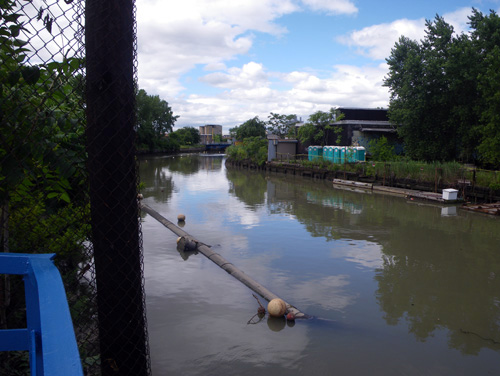
A few months ago, Jennifer Coates asked me, “Where is the grossest place you have ever been in your boat?”
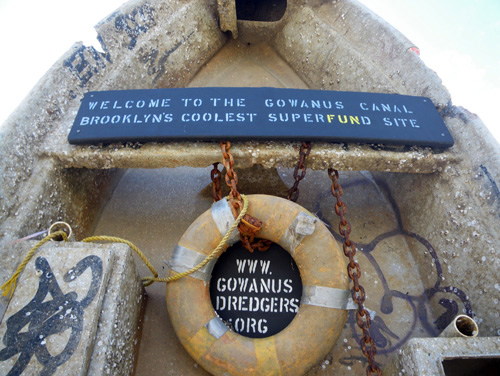
“The Gowanus Canal.” I answered.

We enlisted our friend, Eric Bianchi to come with us on a trip to the grossest place in New York.
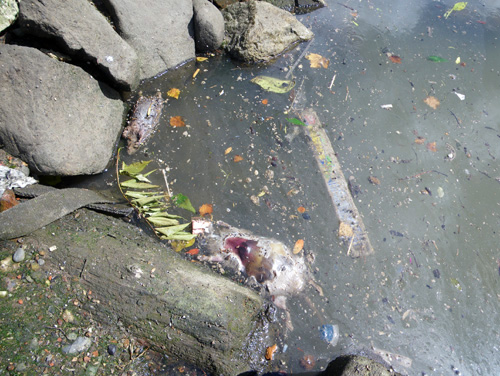
But when I saw the water, I was worried. Floating rat carcasses lined the shore. Here at the beginning of the trip, the Gowanus Canal was proving to be even grosser than I remembered.

We launched the boat over the carcasses,
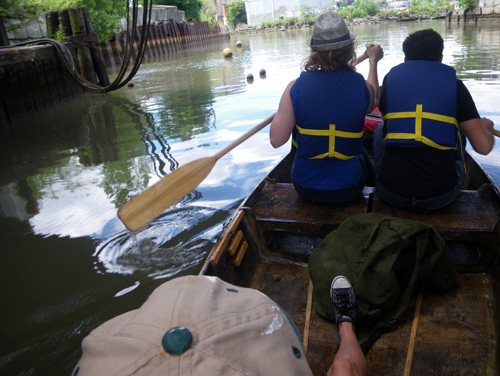
and began our journey.
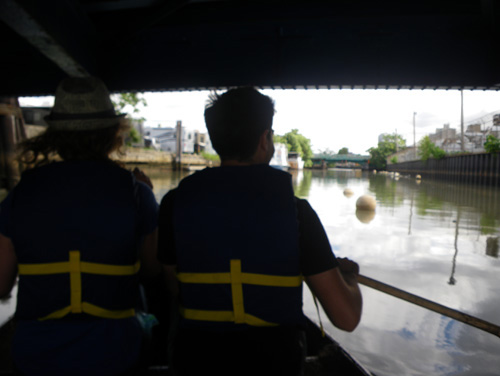
“You know,” said Eric, “The reason I started studying renaisance music was to avoid situations like this.” Eric is a professor of musicology in New York.
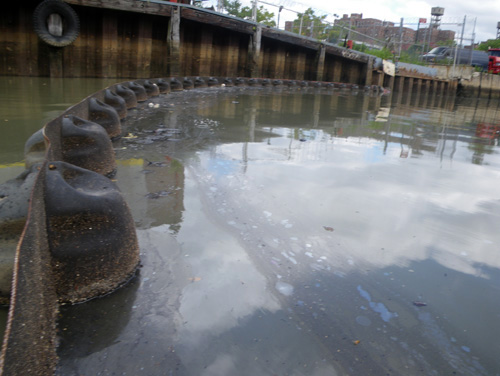
An oil barrier boom was doing a good job of holding back the sludge at the very end of the canal,

but death was everywhere. Even the hardiest of vermin succumbed to the vapors of the Gowanus.
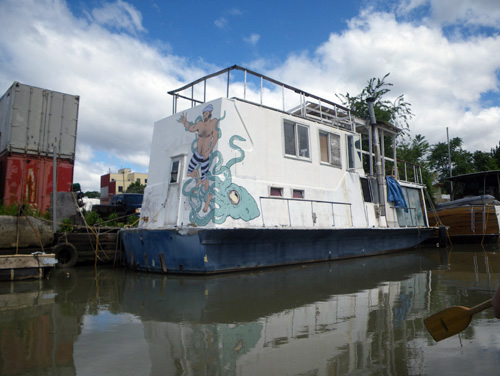
Still, there was something charming about the canal.
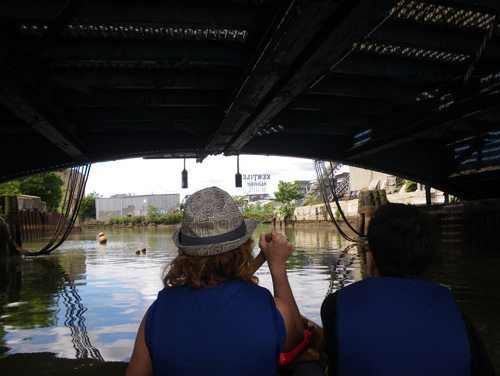
As we floated, Eric pointed some special New York trees.
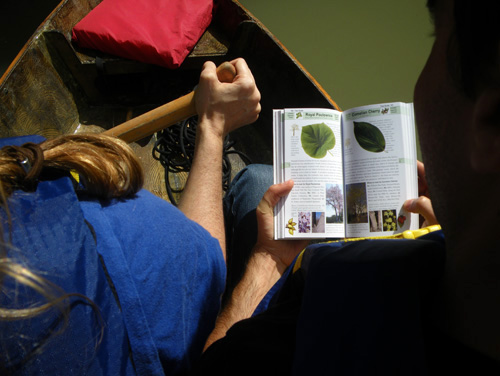
Royal Paulownia, brought to America from China in 1834 and flourishing to this day along the banks of the Gowanus.

“Do you guys want to see the very grossest part of the canal?” I asked.
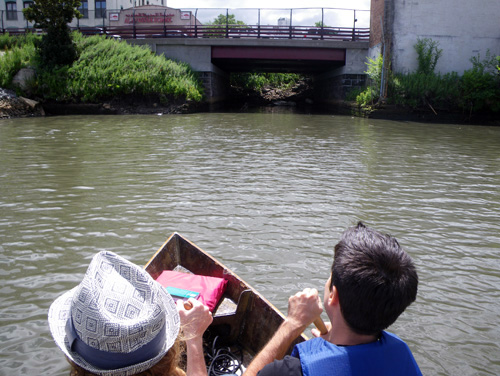
“Yes!” they said.
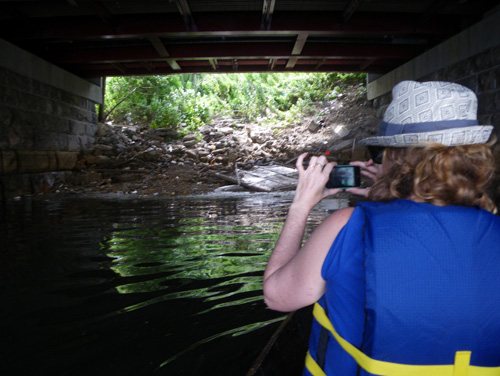
We headed toward a part of the canal that Jennifer now refers to as The Grotto.
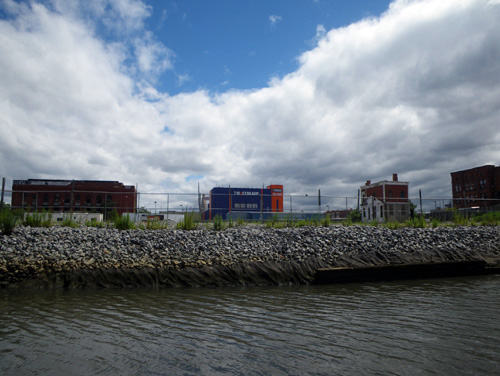
It is a small dead end channel under a bridge, right next to the site of the future Whole Foods Market.
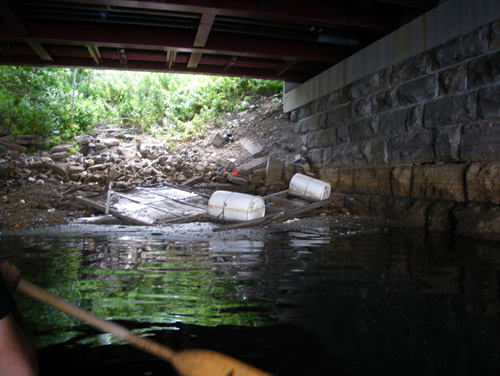
It is a wasted and derelict end, filled with grime and sludge.

The smell back there was literally intoxicating. I felt my breath shorten in fear as the wind pushed us into a dense froth of rat carcasses and slime.

There even apeared to be some kind of art boat washed in among the debris.

We all wanted to get out of there as soon as possible.

Back in the sunlight, the air felt comparatively fresh and warm.
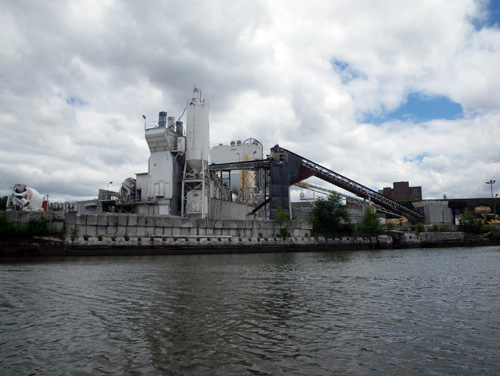
We passed the LeFarge Cement Plant.
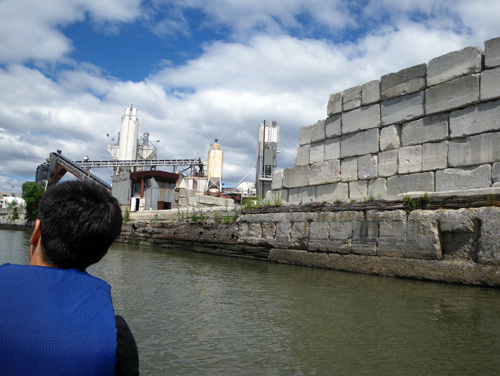
Eric noticed a cement barge coming through the canal. It was as wide as the canal,

and we turned to avoid it.

We waited down an alleyway for the barge and tug to pass.
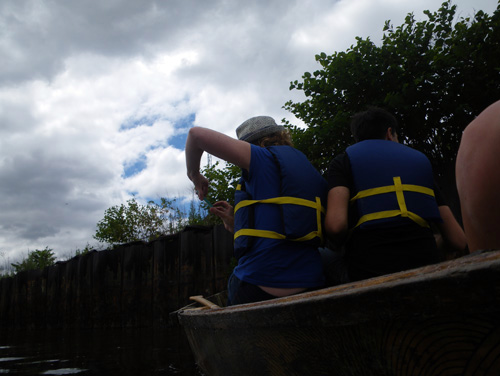
Then we started to notice another thing that makes the canal unique:

large drifts of oil on the surface of the water.

Floating through the iridescent globs was mesmerizing, but sickening to smell.

I have always thought of the oil on the surface of the canal as an indication of the pollution in the muck below.

This is the nexus of the superfund site, I always thought, a geyser of pollution coming out of the earth.
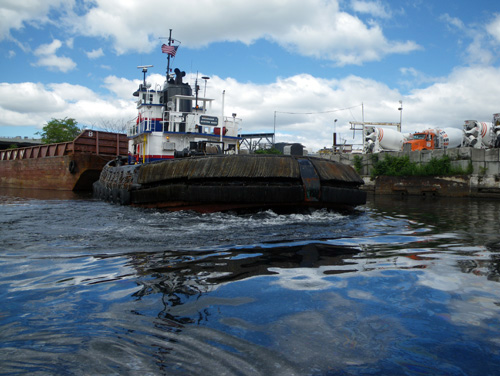
Watching the tugboat churn up the water, I realized that it might be something else.

The oil slick might just be gas from the engine, deposited anew every day.

Maybe this is nothing compared to what is really down there.

As we paddled, our oars lifted black clouds of muck from the bottom,
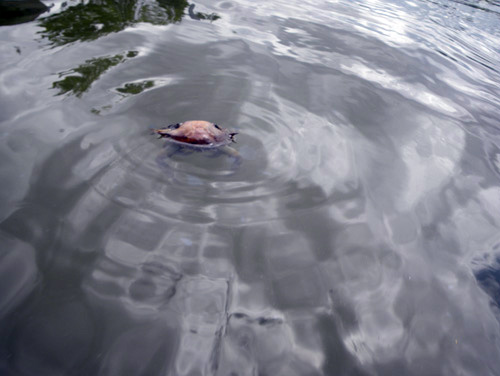
and we floated past dead creatures of every phyla
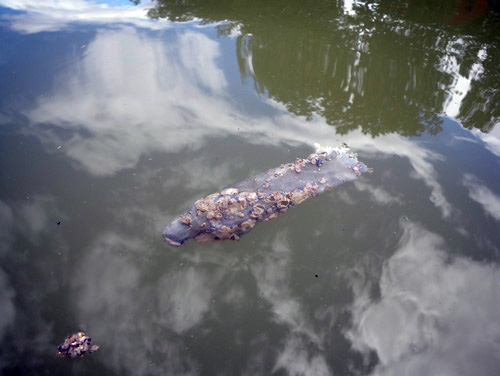
(even the prophylactic phylum).

“I actually wish the Gowanus was a little murkier,” said Eric, “so we couldn’t see what was down there.”
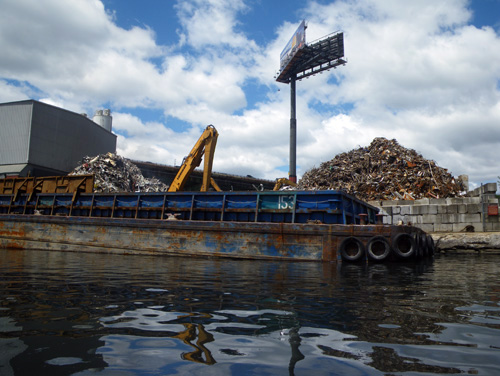
“I want you guys to see the opening of the bay.” I said.
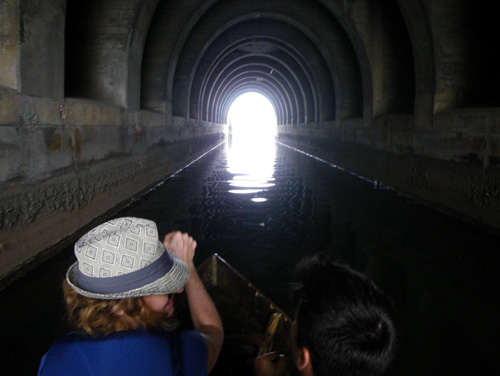
We paddled under the BQE,

and out into the Gowanus Bay.
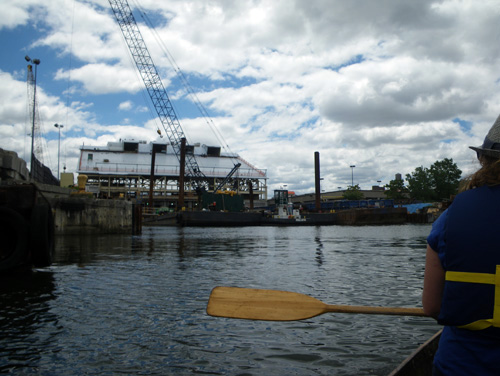
“It’s nice out here,” said Jennifer,
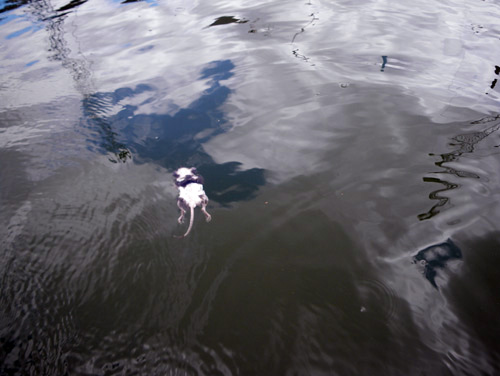
even as little bodies, now like familiar friends, drifted by.

We turned back to the canal,

and headed in to dock.

“OK,” said Jennifer, “now what is the prettiest place you have ever been in your boat?”
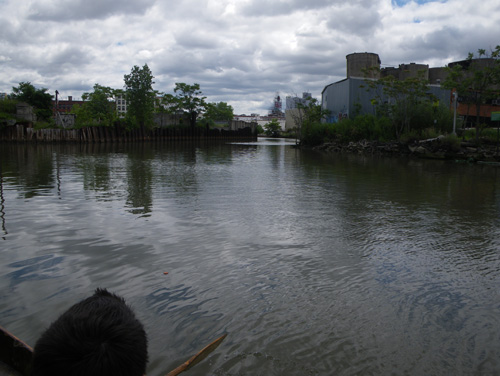
At the time I couldn’t answer. I think it is because they are one in the same,
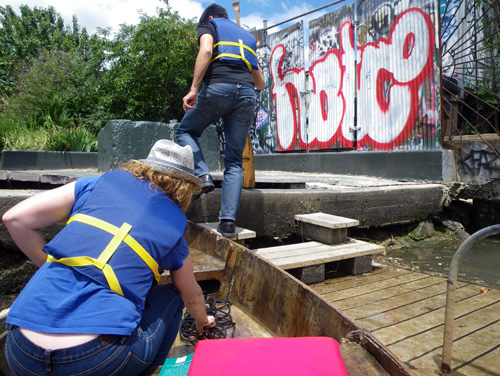
the grossest and the prettiest, inseparably linked.
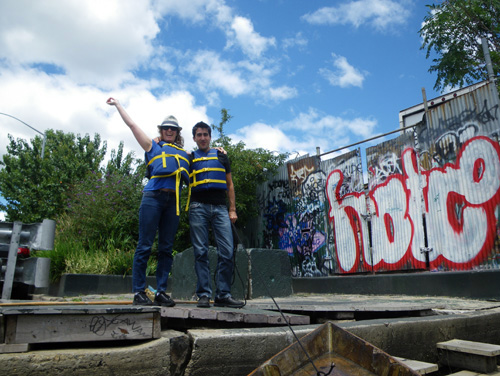
“We made it!”
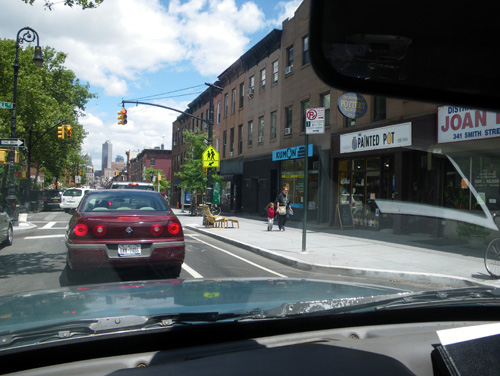
As we drove back into civilization, we joked about how gross the canal had been, and Eric said,
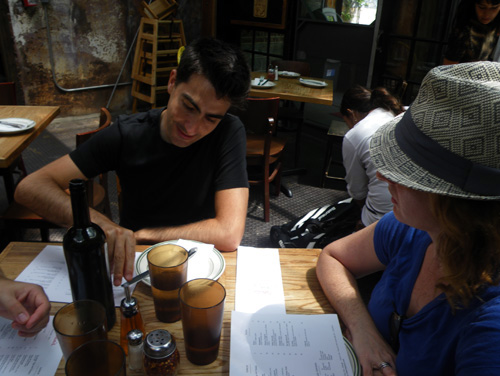
“I thought this experience would make me more curious to explore the industrial waterways of New York, but now I want to be even more insulated from it by a wall of upscale patisseries.”
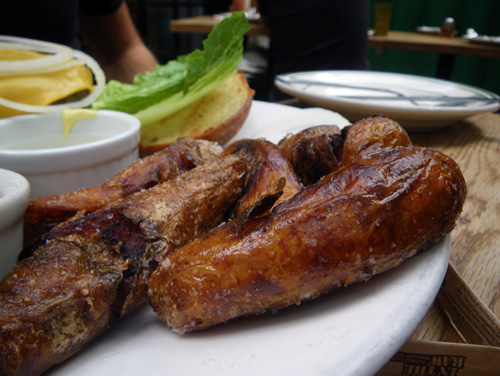
But I know that Jennifer and Eric liked it. Â Or at the very least, they won’t be able to stop thinking about it!
↑ Return to Top of Page ↑